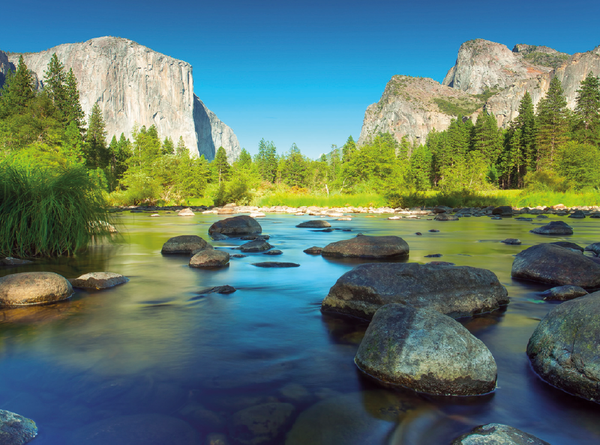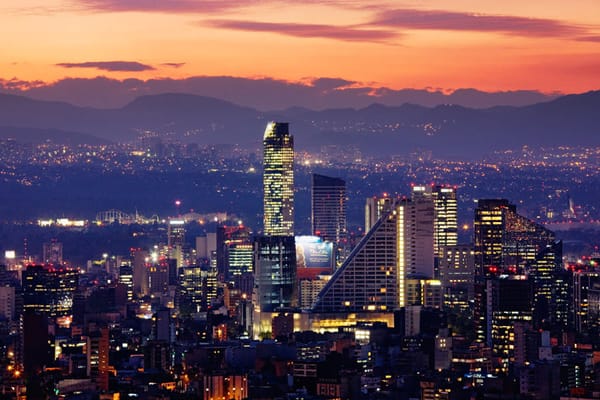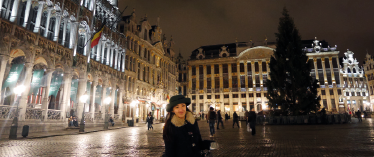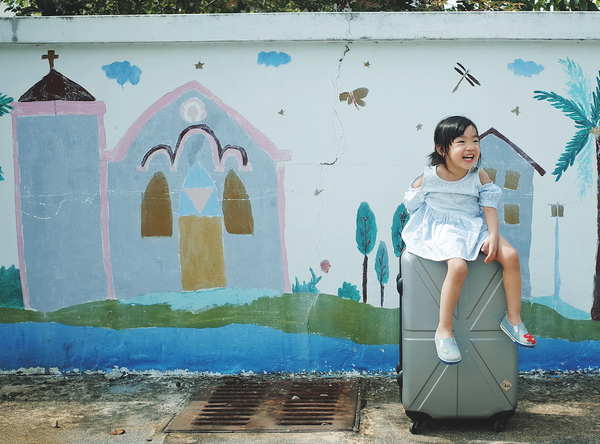Around the World in 19 Festivals
Yung Nam Cheah brings you the best festivals in the world
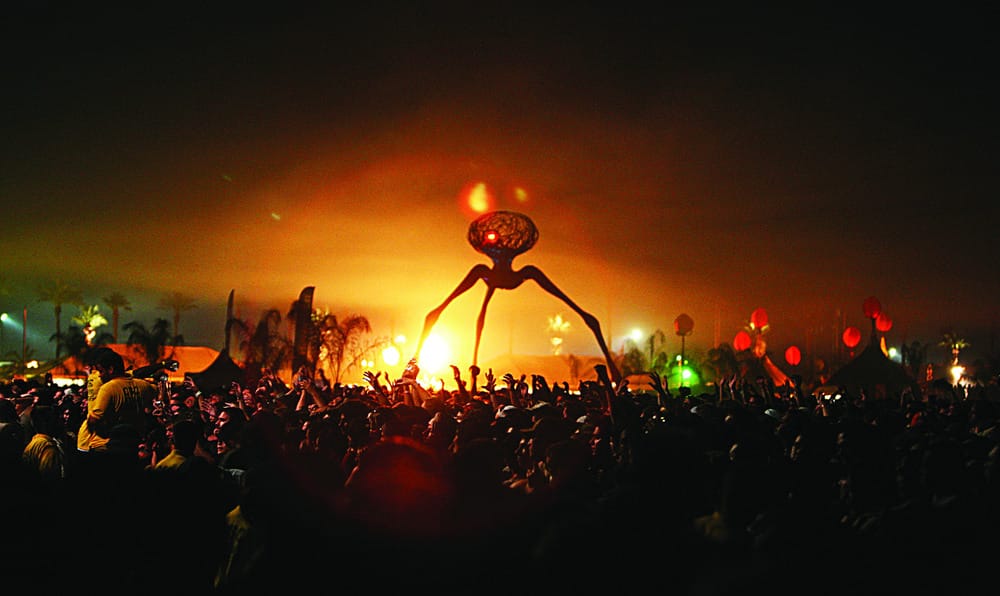
Travel is the only thing you can buy that would make you richer – there’s no denying that visiting a place in person brings history to live in a way that words never can.
What better way to get to know a place and its culture than to take part in a festival? With over 6,500 spoken languages, 194 countries spread over seven continents; the world is a large place with countless cultures each with their own heritage and traditions. Some of these heritages and traditions have evolved into large scale celebrations known as festivals today.
From mating festivals in Africa to making a wish to the heavens in Taiwan, I will attempt to bring you around the world with 19 festivals. Some have deep cultural roots, or religious purposes whilst some are celebration of music and dancing. The list is only a corner of the iceberg and more of a bucket list of my own, but hopefully reading about them will inspire you to travel.
Africa
South Africa - Hermanus Whale Festival
An Eco-festival founded in 1992, The Hermanus Whale Festival combines the spectacle of nature with great food, music, craft fair and fairground. Over a hundred thousand people flock to this South Africa Bay each year for a glimpse of the majestic whale, as it is the most well-known spot of land to observe these giant mammals. This festival is kid-friendly and perfect for those who want something a little different and low key from the mainstream party festivals. Besides, who in their right mind would turn their back on an excuse to see whales in South Africa?
Time: 2/10 – 4/10 for 2015
Official website: http://www.whalefestival.co.za/
Tanzania – Wildebeest Migration
Now this one is more of an annual event than a festival – a force of nature that is one of the most breathtaking sights in the world. Occurring over northern Tanzania and Kenya, this migration sees two to two and a half million wildebeest, zebra and gazelle moving across the wild.
The best place to witness this stunning act of nature is at Serengeti, a UNESCO heritage park located in north Tanzania that extends to SW Kenya. The wildebeest migration occurs throughout the year, but the best time to see them is from December to February. If you really want to stay ahead of the game, then choosing a mobile camping group is probably best for you (links below). There are few permanent lodges in this area, and overall it would be wise to book a tour to visit the majestic phenomenon for both safety and a guarantee of sighting.
Time: year-round
Link to useful article: http://www.tanzaniaodyssey.com/tanzania/great-migration
Chad/Niger – The Gerewol Festival
A colourful traditional festival of the Mbororo people, this weeklong celebration involves traditional dancing, feasting, racing, and you guessed it – finding a mate. The young men of the tribe will donned their best costumes, jewellery and vibrant face-paint in search for their future wife. A tradition unchanged by time, this is truly an experience of a life time to immerse yourself in one of the oldest cultural events in the world and see what civilization was like hundreds, even thousands of years ago.
A similar ritual occurs on the southern edge of the Sahara by nomadic Wodaabe Fula people of Niger. They are cattle herders on their way south to their dry season pastures. The largest festival is at In-Gall in NW Niger, where the markets and clan meetings take place. Yaake is the name of the dance event, with the rest of the week consisting of suitors’ competitions and marriage agreement.
Time: Late September
Official website: (tours by travel agents – due to the sheer number no links will be provided)
Latin America
Aguascalientes, Mexico – Festival de las Calaveras (festival of skulls)
A 3,000 years old tradition, Dia de Muertos used to occur in the beginning of summer as a day to remember the deceased. After Spanish Colonisation, however, the date was moved to coincide with All Hallows’ Eve. Most people are probably most familiar with the skull-face makeup, flower headbands and gothic dresses. Sugar skulls inscribed with the name of the dead on the forehead are eaten by friends or relative, and many have taken up wearing colourful skull masks. It is considered a celebration _with _the dead, not of the dead, as the gates of hell opened on 31st October.
It is historically celebrated in southern Mexico, but has spread north and south throughout North and South America. The festival is hosted in the city fairgrounds with craft and food stands as well as concert, theatre productions and the grand parade.
Time: 28/10 – 9/11 for 2015
Official website: http://www.festivaldecalaveras.com.mx/
South America
Rio de Janeiro, Brazil – Rio festival
Over two centuries old, Rio festival is considered the largest festival in the world. Celebrated four days before the beginning of Lent, the city is alive with parties, costumes, drinks, food and music. Street parties are less fancy, with a larger focus on music and loved by locals. To bring everything to a show-stopping end – the Samba Parade is the perfect conclusion.
What is Samba? It’s the Brazilian music genre and dance style, born from Africa tradition and a Brazilian cultural icon. Taking place in the Sambadrome’s Prof, it involves various Samba schools showcasing themselves for 80 minutes with floats, revellers and adornments. Each will have a different theme, mood and style, showing you a story with choreographed dances and costumes. Their rehearsals can be attended for a small fee – and are worth it for the music, show and the possibility of a party afterwards.
Time: 5/2 to 9/2 for 2016
Official Website: http://www.rio-carnival.net/
Peru – Inti Raymi
Translated as the Festival of the Sun, Inti Raymi is the celebration of Winter Solstice in honour of the god Inti by the Incas. The ceremonies not only celebrate the Sun and the start of a new planting season, but a plea to bring the Sun back and shortened this longest night in the Southern Hemisphere. The first Inti Raymi was held in 1412, and was the most important event during the Inca Empire involving 9 days of colourful dances, processions and animal sacrifices in Cuzco. It was banned in 1535 by Catholic priests, but was reconstructed since 1944 at Sacsayhuaman (2km from Cuzco) on June 24th. However, the festival is still celebrated by indigenous cultures throughout the Andes. Colourful costumes, music and food sharing are carried out.
Time: 21st or 22nd June
Official website: the official website cannot be found, but here’s a more in depth article from lonelyplanet:
http://www.lonelyplanet.com/peru/travel-tips-and-articles/77190
Buenos Aires, Argentina – Festival y Mundial de Tango
It is all about the tango in this Argentinian festival, with the ‘Festival and Dance World Cup’ held in the same week in August. Thousands of dancers flood into the city from all over the world to take part in the celebration of tango, which is declared as an Intangible Cultural Heritage of Humanity in December 2009. Whether you are a seasoned tango dancer or just here to enjoy the show, the nightly milonga (where tango is danced) all over the city, concerts and will definitely keep you entertained. What’s more is that all the activities and shows of the Tango Buenos Aires festival are free and admitted on a first come, first serve principle or given out at a certain time and place, so make sure you do your research and be ready for the week. With this amazing festival being free – what excuse do you have for not booking that flight to Argentina?
Time: August (tbc for 2015)
Official website: (from last year) http://festivales.buenosaires.gob.ar/2014/tangofestivalymundial/en/reglamento
North America
Nevada, US – Burning Man Festival
Originated on San Francisco’s Baker Beach as a bonfire ritual on the Summer Solstice in 1986, the Burning Man Festival had since migrated to the Black Rock Desert in Nevada. Named from its ritual of the burning of a large wooden effigy, the festival is different in a sense that it does not have a single focus. Instead, it is guided by ten principles: radical inclusion, gifting, decommondiciation, radical self-reliance, radical self-expression, communal effort, civic responsibility, leaving no trace, participation and immediacy.
The weeklong festival that begins on the last Monday of August, and take place in the middle of a large playa at the temporary city named Black Rock City by the participants. It is usually built a few weeks before the event by volunteers from the Department of Public Workers. A temple has become an addition to the burning man (historically up to 105 ft tall) since 2000, and various artworks are installed in the desert as well. With a price of 390 USD, it is up to you to decide whether this unique festival in the middle of nowhere is worth the journey.
Time: Last Monday of August
Official website: http://burningman.org/
New Orleans, US - Mardi Gras
They say that US have a version of everything, and can’t be more true when it comes to New Orleans Mardi Gras Carnival. Similar to the Venetian Mask Carnival, Mardi Gras was brought to US by the early French settlers to commemorate the start of Lent. The first record of the Mardi Gras celebration can be traced back to 1699, and the custom of balls, parades and costume were established by 1742.
Modern day Mardi Gras begins on the Twelfth Night (6th January), with masked balls held by Carnival’s oldest societies. Other events to look out for are the parade featuring Krewes of Muses, Lundi Gras (Fat Monday), Zulu parade and Rex parade. Activities are spread out over two weeks and if you do decide to go, don’t forget to invest in grabs of their official colour of purple, gold and green, representing justice, power and faith.
Time: Fat Tuesday (9/2 for 2016)
Official website: http://www.mardigrasneworleans.com/
Las Vegas, US – Coachella
Known as the ultimate music festival, Coachella is one of the most famous music festivals in the world. A three-day event that repeats over two weekends, it is held in Coachella Valley, Colorado Desert in California. It started in 1993 as a concert by Pearl Jam at the Empire Polo Club as a boycott to Ticketmaster venue. This eventually led to an inaugural event in 1999, and reached its current format in 2012.
Notable performers in the past were Radio Head, Red Hot Chilli Peppers, Paul McCartney and Eminem. Despite charging an extortionate amount of money, thousands of people flock to the Californian valley decked in their best. Whether it is for the line-up, the sighting of celebrities or experience, it seems to me that people either love it, or hate it.
Time: April
Official website: https://www.coachella.com/
Europe
Venice, Italy – Mask Carnival
Lasting ten days, the legendary Venice Mask Carnival takes place every year, beginning two weeks before Ash Wednesday and ends on Shrove Tuesday. Originated in the 11th century, the world famous festival used to be a 2 month long festivity. It went into a decline during the 18th century, but was revived again in 1979.
The celebrations centre around St Mark’s Square, with locals and tourists decked out in their finest costumes and, of course, their masks attending balls, tea parties and tours occurring all over the city. Bear in mind, however, that most of the tickets are rather pricey with few exceptions, so it’s best to save up or pre plan your trips.
Time of the year: generally around February
Official website: http://www.venice-carnival-italy.com/
Bunol, Spain – La Tomatina
What started out as a food fight during the Giants and Big-Heads figure parade in 1945 has eventually become a tradition in 1950 and made official in 1957. From 1975 onwards, the festival gained traction and draw crowds from across the world to take part in the ‘tomato pelting’ festivities, in fact, in gaining so much attention that it was declared as a Festivity of International Tourist Interest by the Secretary Department of Tourism.
The festival begins with participants climbing a greased pole to throw a piece of meat speared on top. Water shot is fired and trucks enter when the meat is thrown off, then chaos ensued. For those of you who are skeptical on the safety – tomatoes are squashed beforehand and use of goggles and gloves are recommended. Whilst some of you might opt to wear swimwear to avoid staining your clothes, a source had warned that male participants have the tendency to try and rip it off you. So ladies, remember to bring a t-shirt that you wouldn’t miss.
Time: last Wednesday of August
Official website: http://www.latomatinatours.com/
Munich, Germany – Oktoberfest
The seeds for what will be the world’s largest funfair begun when the citizens of Munich were invited to attend the festivities of King Ludwig I’s wedding to Princess Therese of Saxe-Hildburghausen on 12th October, 1810 when he was still a crown prince. Since then, horse races, carnival booths and agriculture show appeared intermittently between the years on this date, and in 1819 the event was made annual.
The festival is nicknamed Wiesn locally, a shortened form of Theresienwiese (Theresa’s meadow) of which the field is named, in honour of the princess. Now lasting 16 days, horse races were no longer held, but up to 7 million litres of beer are consumed. Amusement rides, circus tents, games and traditional food stalls flood across the 42 hectare green space, with an estimate of 6 million visitors each year.
Timing: Late September to early October
Official Website:
Asia
India – Holi festival
Inspiring powdered throwing celebrations around the world, Holi festival is the mother of all colour festivals. An ancient Hindu festival, the tradition of throwing coloured powders originated from the Braj region of India. Krishna, a Hindu deity with dark blue skin from drinking poisoned breast milk feared no one would love him, and his mother encouraged him to colour Radha’s face in any colour he wants and the two became a couple. The festival celebrates the beginning of spring, but also with religious symbolism commemorating the triumph of Vishnu and her son over the demon king Hiranyakashipu and his sister “Holika”. The latter was burnt in a bonfire that is recreated on the night before the festival. Its first record was by poet Kalidasa during the 4th century. The day is for pure enjoyment and partying, with only one aim: the colour everyone. Traditionally, natural colour powders such as turmeric are used, but nowadays any methods from water balloons to coloured solutions are fair game. The festival is traditionally celebrated in India and Nepal, but has gained popularity all over the world. To see what a traditional Holi is like, go to Mathura and Vrindavan; for modern Holi, then Delhi is the place.
Time: Phalgun Purnima,typically in March
Official website: http://www.holifestival.org/
Pingxi, Taiwan - Pingxi Sky Lantern Festival
For those of you have seen Tangled, the scene with thousands of lanterns floating across the skin would surely be etched in your mind. These lanterns are made out of bamboo stick covered with thin oiled paper or tissue with a ball dipped in kerosene inside. It is believed that they were invented by the famous military strategist Kung Ming (181 – 234 A.D.) during the Three Kingdoms Era in China, hence are also called ‘Kung Ming Lanterns’. The Pingxi Sky Lantern Festival is set in the remote mountain village of Taiwan and is part of the celebration of Chinese New Year. It has a less ancient origin, beginning in 1990 as a tradition from war-time communication. It is a unique combination of parade, fireworks and sky lanterns that attract thousands of tourists each year. It is said that releasing the lantern into the air with wishes written on it can bring its fulfilment.
Time: Lunar New Year (usually around February)
Official Website: http://timefortaiwan.tw/cal_en/cal_19543
Kyoto, Japan – Gion Matsuri
More of a season of festivals than just one, Matsuri in Japan is a huge thing. Almost every shrine has their own, with a procession consisting of men in traditional garb carrying dashi (temple-like float) carrying the kami (deity) across the streets. One of the most famous is the Gion Matsuri in Kyoto of the Yasaka Shrine that occurs through the whole of July, with two parades (17/7 and 24/7) consisting of floats up to 20 m tall. It originated as a purification ritual to appease gods that are thought to cause natural disasters by the Emperor Seiwa. Food stalls, festival games are also set up on streets with girls dressed in yukata (summer kimono). For maximum culture exposure, it is worth going to the old kimono merchant district during yoiyama (15/7) to visit the private houses exhibiting heirlooms.
Time: July
Official website: http://www.jnto.go.jp/eng/location/spot/festival/gion.html
Polynesian and Australasian
Sarawak/ West Kalimantan - Gawai Dayak
What started in 1957 by a radio forum has become a festival for the Dayak people, a native ethnic group of Sarawak and neighbouring Indonesian Kalimantan. The world Gawai actually means festival in Iban, and it was first celebrated on 1st June, 1965 as a thanksgiving day marking the farming season as well as unity and hope for the community. The preparation of the festival starts early, with the traditional rice wine tuak brewed at least one month prior). Alongside traditional ceremonies to cast away the spirit of greed and offering to the seven deities, there are a lot of drinking, dancing and music. Visiting others and dressing in traditional costumes made up the second day, with many mini sports and games dotted throughout the festival.
Time: 31/5 – 1/6
Official website: http://publicholidays.com.my/hari-gawai/
Cape York Peninsula – Laura Aboriginal Dance Festival
Started out in the early 80s within the communities of Cape York, this biennial three-day festival celebrates and showcases the Australia’s Aboriginal culture through dancing, storytelling and singing. Situated on the traditional Bora ground that is sacred to the Aboriginal people, the area is home to spectacular rock arts that are some of the oldest in the world. With over 20 communities and 500 performers, it signifies the passing down of one of the oldest cultures in the world and its continuance. The festival not only drew thousands of tourists from across the world, but a platform for descendants of Aboriginal people to learn about their culture.
Time: 19/6 – 21/6 for 2015
Official website: http://www.lauradancefestival.com/
Bali, Indonesia – Galungan festival
One of the most important days for Hindu-Balinese, the festival celebrates the victory of _dharma _(good)over adharma (bad). The festival marks the time when the ancestral spirits visit the Earth and ends on Kuningan when they return. As offerings to the returned spirits, penjor – bamboo poles with offerings suspended on one end are installed along the side of the roads. A curious fact is that the holiday follows the 210-day pawukon calendar, therefore take place twice a year. Preparation takes place three days prior – Penyekeban, the day to cover up; then comes the _Penyajahan – _time to make Balinese cake jaja consist of fried rice dough used in offering. Finally, the day before the festival is Penampahan, the slaughter day where animals are sacrificed as an offerings. On the day, Balinese will pray at temples and make their offering, followed by visiting of close friends the day after. Despite the fact that many places will be closed for the day, you will get to see colourfully flocked Balinese making their way to the temple, as well as local restaurants offering their native dishes.
Time: Wednesday of the 11th week of 210-day pawukon calendar (15/7/2015; 10/02/2016)
Official website: there isn’t one since it is a religious holiday
Editorial - Fly me to the moon: Festival hopping
Travel has become the new black, with everybody and anybody going off for their gap year or luxury spa holiday or a city break spamming you on facebook, twitter and Instagram. Your primary school friend had just flown off the Peru to climb Machu Pichu, your high school friends are having the time of their lives island hopping in Thailand and you thought to yourself, why aren’t I going anywhere interesting as well?
There are probably a festival for every month, if not every day of the year if one was to scour through the Earth looking for it, but in truth many major festivals tend to clash. A good example would be February, with Mardi Gras, Rio and Venice Mask festival all take place over Lent, as well as the Lantern Festival in Taiwan which take place over Chinese New Year.
Well, here’s your chance! Forget about your friends’ stereotypical gap years around Thailand or Australia and take on this new travel challenge: festival hopping! Because everyone in Imperial deserves a break.
Suggested itineraries:
The summer festival hop:
Start off with Galungan Festival in Bali on 15th July, then head to Kyoto to enjoy the rest of Gion Matsuri for the rest of July. You then have three weeks to explore SE Asia before you fly to Spainfor_La Tomatia_. Give yourself a month to wander across the Mediterranean Ocean before joining a tour to witness the ancient _Gerewol festival _in Niger before it’s time to return to Imperial in October.
Spring parties haul:
For the life and soul of this world who wants to take a break before committing for a career, pick your poison and start off either at Rio de Jairo, Venice or New Orleans. After celebrating Lent in style during February, make sure you make your way to Indiain March for the colourful _Holi festival. _You then have roughly a month before Coachella starts in the party capital Las Vegas, where you are free to stay for live or carry on road-tripping through America.
Southern Hemisphere Run:
What would live be like down under? Start your journey by easing yourself in Indonesia’s _Gawai Dayakfestival_and immersing yourself in the Dakay people’s harvest ritual on 1st June. Then head to Peru and experience the _festival of the sun - _ _Inti Raymi_on Southern Hemisphere’s winter solstice. You can end your journey here or travel through South America for two months (or drop by Balifor Galungan in July) before heading to Argentinafor the free Tango festival.
Of course, the above itineraries are merely my fantasy and a suggestion; however, with the amount of people going on a round-the-world trips, making world famous festivals as the focus doesn’t sound that bad. Whether you want to hop for two, three or twenty festivals over a month, two months or a year, here are a few tips to help you plan the journey of you life:
Flights:
Most of you would probably immediately type in Skyscanner’s website, or Easyjet and Ryanair, but for multi-stop or long haul tickets STA Travel is probably the best deal out there you can find. With _price beat guarantee _and £49 deposit to secure flights, it’s the ultimate student travel company. Sample itineraries such as The Big Boomerang fly you across Europe, Asia, Australia and America through 11 stops for £1,399 and you are free to create your own itinerary!
For those who are still skeptical about the price – my sister recently booked her return tickets to LA after researching for days and saved £30.
And for people who always change their mind, they have Multiflex pass from £29 to £99 allowing you to change flights from 1 to unlimited times.
Information: www.statravel.co.uk
Accommodation:
For those with low budgets, hostelworldis a good place to look, although you most look through the reviews and rating before choosing it. For those who want to live like a local, Airbnb offers rooms for all budgets.
Alternatively, for the more web savvy A-listers who wants an en-suite, Voyageprivecan offer luxury accommodation for a good price but usually based on two sharing. Otherwise, Hotel.com gives you a free night every ten nights you book.

